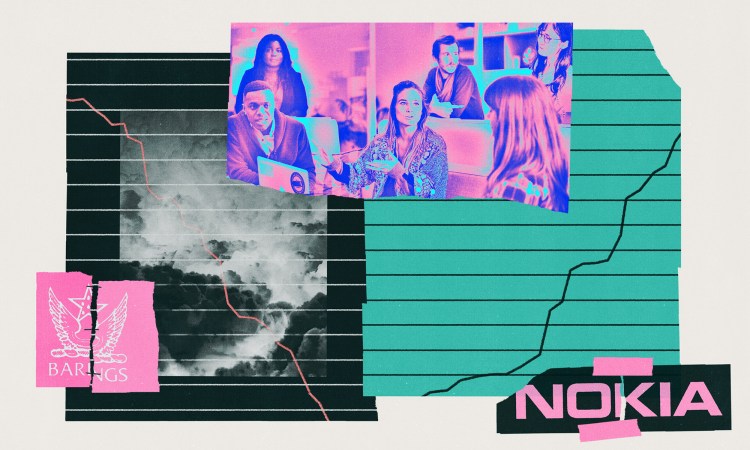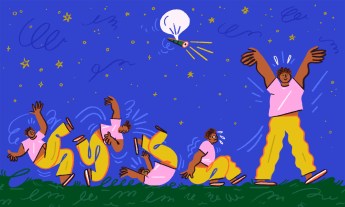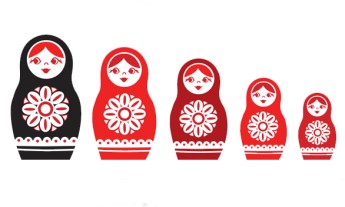
Companies have existential crises, too — defining moments when, if they aren’t to die, they must forge a new future for themselves.
The mythology of this moment follows a hyperbolic narrative: Long-term willful blindness to creeping failure puts the organization in jeopardy. It teeters on the brink until a heroic guy — almost invariably, a guy — rides into town and single-handedly saves the day.
Heads roll, weaklings are thrown overboard, ruthless cost cutting and savage deal-making deliver victory. The hackneyed simplicity of the story implicitly casts the old guard as idiots and the hero as a genius technocrat, slaying bureaucratic dragons with inspirational bravura.
The reality is more complex and subtle; it is also more emotional. When great old companies fail, grown men weep — at their folly and weakness, at the loss of reputation and legacy, at the end of an institution’s history.
Their tears acknowledge that companies are more than buildings and balance sheets; they are living organisms containing personal dreams. When businesses die, personal hopes go with them.
Nokia was the first company to put cameras into phones, a pioneer of tablets and mobile games. It made as much money as all of Finland’s other companies combined.
One of the most radical corporate reinventions in recent times has been the reincarnation of Nokia. Once the world’s dominant designer and producer of mobile phones in the 1990s and early 2000s, the company had transformed what had been a luxury item for high-paid executives into a must-have for every consumer in the world.
The first company to put cameras into phones, a pioneer of tablets and mobile games, for many Nokia was all anyone knew about Finland, where the company’s revenues represented four percent of the nation’s GDP. The company made as much money as all the country’s other companies combined.
Contrary to Silicon Valley mythology, the launch of the iPhone in 2007 did not spell an inevitable end for Nokia. Comparing Apple’s invention with the Nokia smartphone N95, reviewers dissed the newcomer, lauding the incumbent.
In the first quarter of 2008, Nokia shipped 115 million phones, compared to a mere 1.7 million devices from Apple. It didn’t even look like a contest.
But when the Android operating system launched later in 2008, the market changed and accelerated. Endemic demons started to surface: Weaknesses in Nokia’s Symbian operating system made it too hard and slow to update; the phones were so rugged that the touchscreen almost needed a hammer. These problems weren’t secrets, but the company’s culture was so polite and hierarchical that nobody talked about them.
The huge global coverage of Nokia — in 140 countries — became a burden, as it made design permutations too complex.
What had been assets became liabilities: the technology, the culture, the management structure. Each new product came to the market too late, and it began to look as though the company was caught in a death spiral.
Toward the end of 2009, McKinsey’s Organizational Health Index — comparing Nokia to thousands of other companies — placed it in the bottom 25th percentile. McKinsey predicted that any company at this level would cease trading within two years.
In desperation, the board did what so many businesses do: Prayed for a savior CEO. In 2010, they appointed Stephen Elop, an executive from Microsoft who became the first non-Finn to run the 150-year-old company.
His famous memo made it clear where the company now stood: “We’ve poured gasoline on our own burning platform. We have lacked accountability and leadership to align and direct the company through these disruptive times. We haven’t been delivering innovation fast enough. We’re not collaborating internally …”
When time is tight and money is running out, a company needs lots of options. But under pressure, thinking typically gets rigid with fear.
Knowing you are in a crisis is essential to surviving one. But it’s rarely enough.
Plenty of companies (Sharper Image, Washington Mutual, Lehman Brothers, Toys “R” Us) have been incinerated on their platforms. Routine responses — layoffs, cost cutting, exhortations to work harder — breed cynicism, division, and contempt.
To define a future no one can see yet requires radical imagination. When time is tight and money is running out, a company can’t afford binary choices; it needs lots of options. But under pressure, thinking typically becomes even more constrained and hackneyed, rigid with fear.
In its new chairman, Nokia got lucky. Risto Siilasmaa was — by background and mindset — an entrepreneur, accustomed to risk and to thinking freely for himself. As a board member, he had chafed for four years at the company’s formality and complacency. Now he had a license to challenge.
What distinguished his approach was that, at a time when focus typically narrows, Siilasmaa was prepared to go broad. Instead of trying to cut his way to prosperity, Siilasmaa cajoled, encouraged, nagged and berated board members and employees to question everything. No sacred cows. No hostages to fortune. No deference.
He conducted what now looks like scenario planning on speed — multiple plans, diverse configurations of a new Nokia. When you know you can’t afford to stop, he said, it’s much easier to keep going.
The idea of constructing and testing out a variety of scenarios seems obvious, but most companies in a crisis work frantically to construct a single, perfect plan. (Governments often do likewise.) Overwhelmed by complexity, they shrink their options just when they need to expand them.
What surprised Siilasmaa was that thinking together helped everyone trust each other more. When you feel you are being listened to, he observed, you appreciate your listener. It was a great way for executives and the board to learn and to search, a fast and transformative way to get a deeper, richer contribution from everyone.
The company’s “bridge program” offered training for new jobs, money for education, backing for entrepreneurial ventures, or help finding work with a new company.
Refusing to trust that any one plan would prove perfect, they kept recombining different pieces of the puzzle. By 2013, the company found a first step: Selling the handset business to Microsoft would buy the company time. Siilasmaa’s quiet, consultative style even persuaded Microsoft’s famously incandescent Steve Ballmer to negotiate in good faith.
At no point did Siilasmaa think about Nokia as just a financial entity. The company contained huge meaning for employees, business partners, customers and the Finnish nation as a whole, all proud of a business that had pioneered one of the coolest technologies of their lifetime. Nokia’s crisis could not be solved by compromising standards, only by rising to them.
The company’s “bridge program” wasn’t a typical corporate euphemism for laying people off. It offered training for new jobs, money for a new education, backing for entrepreneurial ventures, or help finding work with a new company. The way in which their colleagues were treated built trust and energy among those who remained.
When the Microsoft deal was done, many in the company cried. But the crisis wasn’t over. What was to become of the company’s remaining, strategically incoherent assets?
Again, Siilasmaa and his team searched for multiple configurations for a new company until finally in 2016, with the acquisition of Alcatel-Lucent, Nokia emerged as one of the top three telecom infrastructure businesses in the world.
Today, whenever you send a bit into the internet, it goes through Nokia equipment or software somewhere along the way. As such, it is one of the very few non-Chinese makers of internet infrastructure.
The Nokia story isn’t a neat melodrama of death and resurrection. As perhaps befits a nation famous for taciturn stoicism, it is a story of hard grind and nerdy negotiation delivered with patience and trepidation by thousands of individuals for whom the company is more than a job and their colleagues more than economic units of production.
That the company had a tradition of reinvention may have helped: In 1865, it had started as a lumber mill, became a power generator, then a manufacturer of electrical cables, rubber boots and power supplies. The company’s legacy is all around change, adaptation and reinvention. Looking for an image to represent the company’s future, it’s no wonder Siilasmaa points to a blank whiteboard.
Wildly creative strategic thinking, being prepared to consider anything, was essential to Nokia’s survival — but it wasn’t sufficient. As important in generating that open exchange of ideas was the relationship between company leaders.
Although Siilasmaa had been critical of Nokia’s board in the beginning, over time he came to see how much they cared about the business. And as they labored together to save it, what had been formal relationships deepened.
On one level, what enabled Nokia to survive was the emotional commitment its leaders made to each other. “In business,” Siilasmaa said, “we forget that we are human. Many strong leaders think they should not be friends with their colleagues. I disagree. Business is emotional. I like to be friends with my colleagues. You get through a crisis because you care so much.”
The way they had worked at Barings was so different. “It was human and humane. And we wanted to keep it that way,” says corporate lawyer Nicholas Gold.
History can be an asset — not because it repeats itself but because it sets standards and makes people feel that they belong to something more meaningful than a temporary gig. Like cathedrals, old firms have meaning, if they can articulate it. Alan Mulally found this when heading up Ford during the financial crisis. Spending weekends in company archives, he sought out imagery and stories connecting the resilience of the company’s past with the demands of the future.
Similarly, when a rogue trader brought down Barings Bank in 1995, the history of survival was the first note of the crisis.
“Eighteen ninety. It’s happened again.”
This might sound like code, but to the corporate lawyer Nicholas Gold, the meaning was clear.
The Barings Bank Panic of 1890, a moment when Argentinian debt had nearly triggered a global financial meltdown, was legendary. That such a thing could have happened again seemed inconceivable, but when Gold joined the meeting of directors, he learned that the bank had lost all but £10,000.
The chairman, Peter Baring, sat in disbelief repeating: “This cannot be happening. This cannot be happening.”
Gold says that crises are what he’s good at. His entire career had been spent advising executives under pressure: Pursuing a takeover or under threat from one. The previous year, his part of the business — Barings Corporate Finance — had been rated the best advisory business in the city of London, ahead of Goldman Sachs and ahead of Warburg.
Gold was proud of the team’s reputation and determined to protect it. He was instantly pragmatic. At work on Glaxo’s hostile bid for Wellcome, he knew his client’s work on completion would bring the bank £10.5 million. Whatever else happened, that money could buy time. The trading division of the bank might be in disarray, but corporate finance would stay productive.
Over a weekend, ideas came in from everywhere; Barings was a venerable name in the industry and bankers hoped to save it. Would the Bank of England step in, as it had done before? What about the Bank of Japan? Could the other banks chip in to cover Barings’s losses and keep it afloat? Could the charitable Barings Foundation take over the commercial bank?
Tommy Suharto, the son of the president of Indonesia, owned $17 billion worth of platinum; perhaps that could be used as collateral to recapitalize the bank. The most promising scenario proposed a former customer, the Sultan of Brunei, might be able to help, but the Bank of England would still need to guarantee the deal.
But by the end of a long weekend, all the ideas had failed. The Bank of England wouldn’t step in; the other banks couldn’t contribute enough. Suharto wasn’t up for the challenge. To put a charity in charge of a bank would make it impossible to operate. At 8:36 PM, news came that the Sultan of Brunei had decided not to proceed.
At 9PM, the news echoed across the trading floor: Barings had collapsed. CEO Peter Norris wept.
Only two options remained: To go into administration or to sell the bank. But laden with debt, what was there to buy?
All the debt was on the trading side of the bank; all the value lay in corporate finance — but only if the team stayed. They could all have gotten jobs elsewhere but Gold says there wasn’t a moment’s hesitation because the way they had worked at Barings was so different. “It was human and humane. And we wanted to keep it that way.”
In the end, Barings was sold to a small, unknown Dutch bank called ING, for £1 and 1 billion pounds of debt. The trading side of Barings fell apart, but corporate finance survived.
He identified another source of strength: He always operated on the basis that anything could end tomorrow so he lived on his salary, never spending his bonus.
The following year, they were, once more, named the top advisory business in the city. Gold remained until his retirement 14 years later.
When asked how he had managed to weather such an immense crisis and stay so cool, he laughed. Always uncomfortable with praise, he demurred to the quality of his colleagues. Having lunch together every day, he thought, kept them united.
And he identified another source of strength: He had always operated on the basis that anything could end tomorrow. So he lived on his salary, never spending his bonus.
Not depending on the bank kept him clearheaded about what was at stake — the bank itself, not his own personal financial security. It’s the only way, he said, not to muddle what might be best for the institution with what might be advantageous for you.
But headhunters are notorious for circling the minute news of any crisis breaks. What had kept the team together? Gold laughed again, remembering how everyone had run rings around recruiters. “We wanted to work together. We loved Barings. We just loved it …”
Nokia and Barings survived because they meant something to the people who worked in them. They stood for something — innovation, endurance, fair honesty — that mattered enough to draw from their workforce qualities of endurance, creativity and determination. With a real passion for the place and the people in it, they worked for more than money.
It’s often said of business that, in a crisis, cash is king. There’s a brutal truth there: money buys time to craft a survival strategy.
What gets people through crises and into the future is each other.
But what it won’t buy is the motivation people need to keep going, to endure humiliation, recrimination, anger and grief. Only deep bonds, of trust and concern, built over time, will supply that.
At Barings, Gold found that in the colleagues with whom he lunched every day. He also had one further resource. The day the news broke, after the strategizing, after the management meeting, his head reeling with work, he phoned his best friend. “I just had to talk to someone who would understand,” he said. “Understand what it meant to me, this old place that had dignity, that had always been so careful … It was the most shattering and emotional experience of my life.”
Friendship is a topic rarely talked about in the upper echelons of business, but it should be. Nobody survives these crises alone.
Survivors have friends — people not necessarily in the business but who know what it’s like, what it means, people who have only their best interests at heart.
Every successful business leader I’ve known or worked with has such friends, and every one can describe the crises through which they’ve sustained each other. These relationships aren’t transactional, they’re not networking; some leaders refer to their friends as their “North star,” others as the bridge between intellect and character.
What gets people through crises and into the future is each other.
Excerpted from the new book Uncharted: How to Navigate the Future, by Margaret Heffernan © 2020. Reprinted by permission of Avid Reader Press, an imprint of Simon & Schuster, Inc.
Watch her TED Talk now:














